
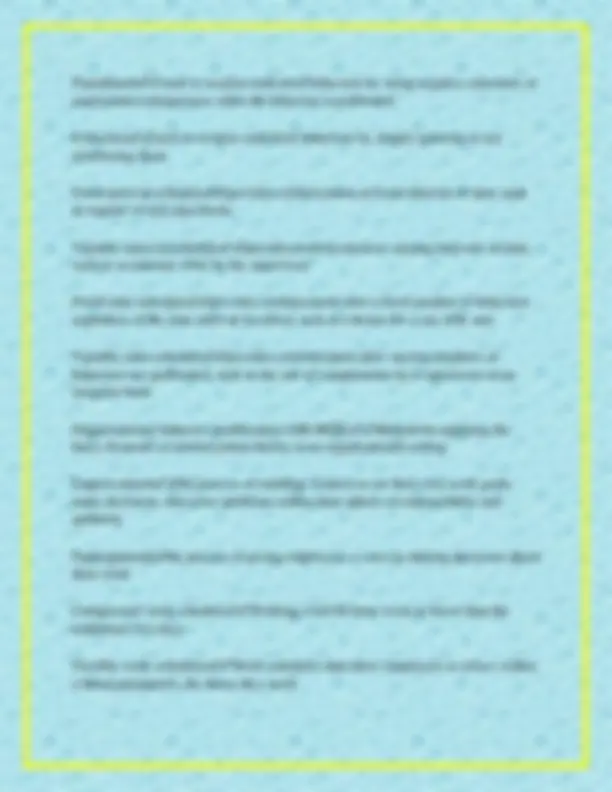
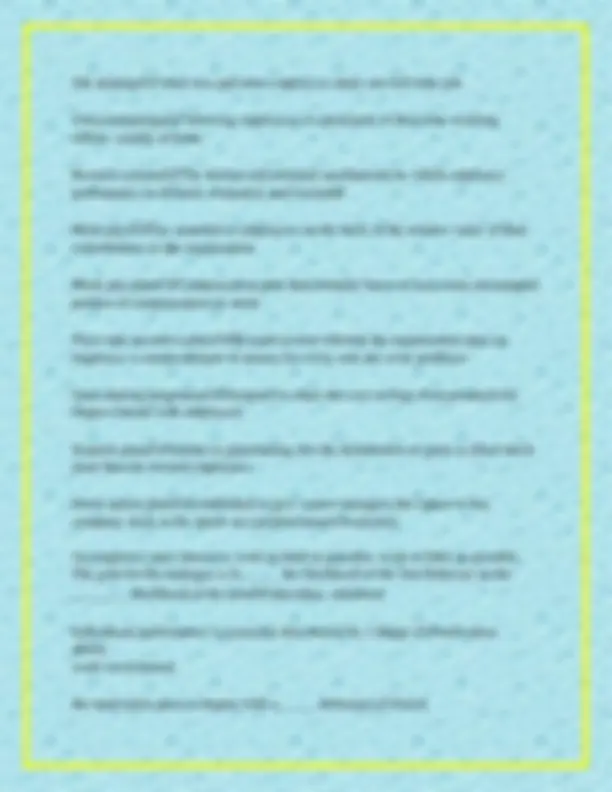
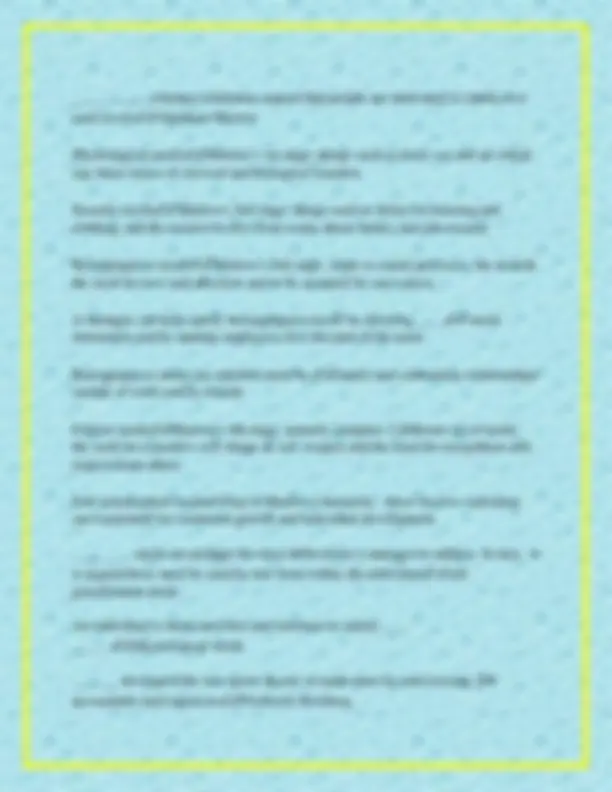
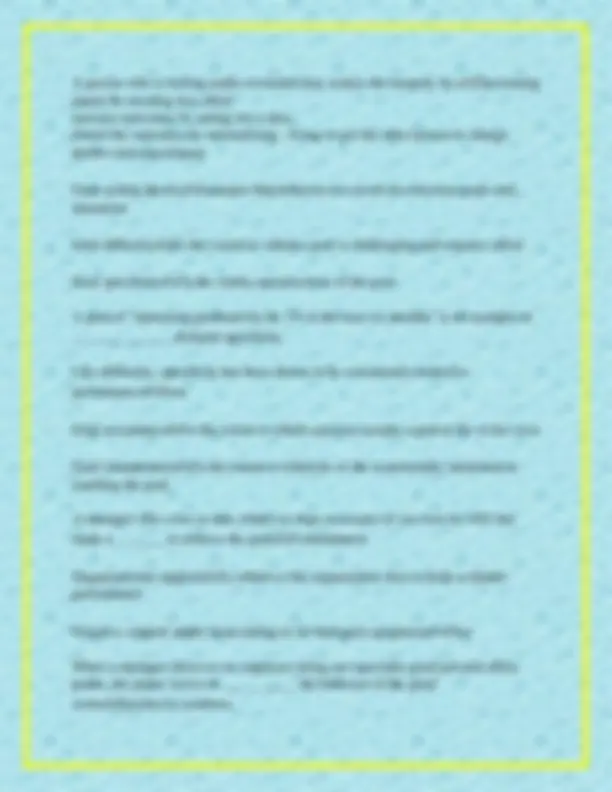
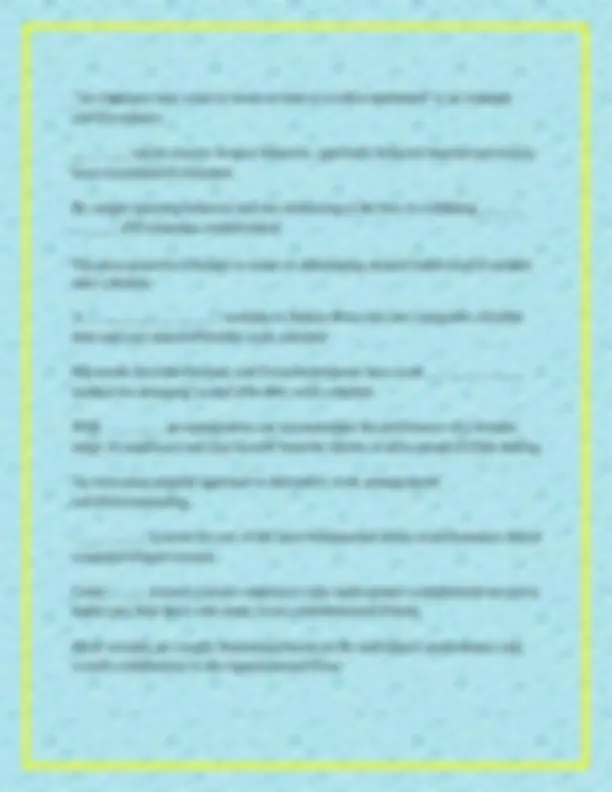
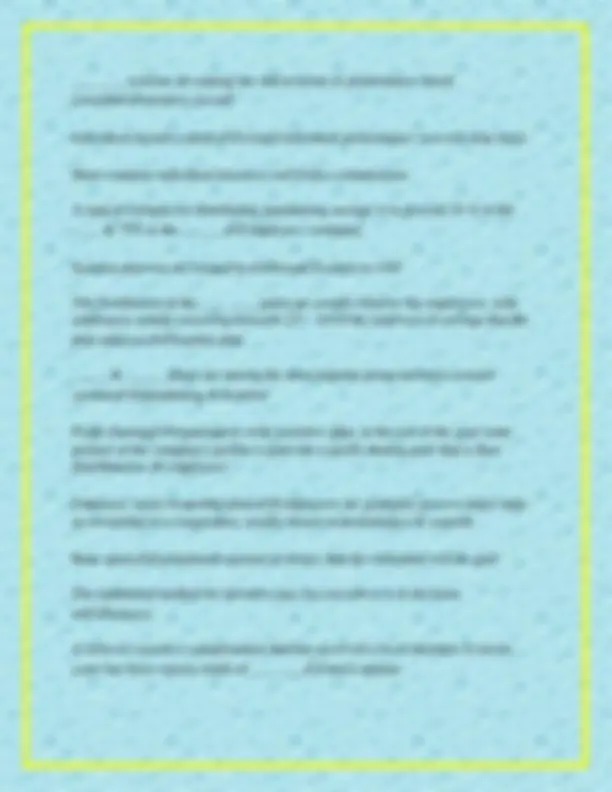


Study with the several resources on Docsity

Earn points by helping other students or get them with a premium plan


Prepare for your exams
Study with the several resources on Docsity

Earn points to download
Earn points by helping other students or get them with a premium plan
Community
Ask the community for help and clear up your study doubts
Discover the best universities in your country according to Docsity users
Free resources
Download our free guides on studying techniques, anxiety management strategies, and thesis advice from Docsity tutors
Managing Employee Motivation & Performance
Typology: Exams
1 / 10

This page cannot be seen from the preview
Don't miss anything!







Ch. 10 Managing Employee Motivation & Performance
_________ at work is the number 1 productivity booster✔✔happiness
Motivation✔✔the set of forces that cause people to behave in certain ways
Content perspectives✔✔approach to motivation that tries to answer the question "what factors motivate people"
Maslow's hierarchy of needs✔✔suggests that people must satisfy five groups of needs in order: physiological, security, belonging-ness, esteem and self- actualization
Two factor theory of motivation✔✔suggests that people's satisfaction and dissatisfaction are influenced by two independent sets of factors - motivation factors and hygiene factors
Motivation factors✔✔achievement recognition the work by itself responsibility advancement & growth
Hygiene Factors✔✔supervisors working conditions interpersonal relations pay and security company policies and administration
Need for achievement✔✔the desire to accomplish a goal or task more effectively then in the past
Need for affiliation✔✔the desire for human companionship and acceptance
Need for power✔✔the desire to be influential in a group and to control one's environment
Process perspectives✔✔approaches to motivation that focus on why people choose certain behavioral options to satisfy their needs and how they evaluate their satisfaction after they have attained those goals
Expectancy theory✔✔suggests that motivation depends on two things - how much we want something and how likely we think we are to get it
Effort-to-performance expectancy✔✔the individual's perception of the probability that effort will lead to high performance
Performance-to-outcome expectancy✔✔the individual's perception that performance will lead to a specific outcome
Outcomes✔✔consequences of behaviors in an organizational setting, usually rewards
Valence✔✔an index of how much an individual values a particular outcome; the attractiveness of the outcome to the individual
Equity theory✔✔contends that people are motivated to seek social equity in the rewards they receive for performance
Reinforcement theory✔✔approach to motivation that argues that behavior that results in rewarding consequences is likely to be repeated, whereas behavior that results in punishing consequences is less likely to be repeated
Positive reinforcement✔✔a method of strengthening behavior with rewards or positive outcomes after a desired behavior is performed
Avoidance✔✔used to strengthen behavior by avoiding unpleasant consequences that would result if the behavior were not performed
Job sharing✔✔when two part time employees share one full-time job
Telecommuting✔✔Allowing employees to spend part of their time working offsite, usually at home
Reward system✔✔The formal and informal mechanisms by which employee performance is defined, evaluated, and rewarded
Merit pay✔✔Pay awarded to employees on the basis of the relative value of their contributions to the organization
Merit pay plan✔✔Compensation plan that formally bases at least some meaningful portion of compensation on merit
Piece-rate incentive plan✔✔Reward system wherein the organization pays an employee a certain amount of money for every unit she or he produces
Gain sharing programs✔✔Designed to share the cost savings from productivity improvements with employees
Scanlon plan✔✔Similar to gainsharing, but the distribution of gains is tilted much more heavily toward employees
Stock option plan✔✔established to give senior managers the option to buy company stock in the future at a predetermined fixed price
An employee may choose to work as hard as possible, or do as little as possible. The goal for the manager is to _____ the likelihood of the first behavior an the
________ likelihood of the last✔✔maximize, minimize
Individuals performance is generally determined by 3 things:✔✔motivation ability work environment
the motivation process begins with a _____ deficiency✔✔need
_____ _____ a human relationist, argued that people are motivated to satisfy five
need levels✔✔Abraham Maslow
Physiological needs✔✔Maslow's 1st stage: things such as food, sex and air which rep. basic issues of survival and biological function
Security needs✔✔Maslow's 2nd stage: things such as desire for housing and clothing, and the need to be free from worry about money and job security
Belongingness needs✔✔Maslow's 3nd stage: relate to social processes. the include the need for love and affection and to be accepted by one's peers.
A manager can help satisfy belongingness needs by allowing ____✔✔social interaction and by making employees feel like part of the team
Belongingness needs are satisfied most by:✔✔family and community relationships outside of work and by friends
Esteem needs✔✔Maslow's 4th stage: actually comprise 2 different set of needs: the need for a positive self-image & self -respect and the need for recognition and respect from others
Self-actualization needs✔✔top of Maslow's hierarchy - these involve realizaing one's potential for continued growth and individual development.
____ ____ needs are perhaps the most difficult for a manager to address. In fact - it
is argued these must be entirely met from within the individual✔✔self- actualization needs
An individual is motivated first and foremost to satisfy ____
_____.✔✔physiological needs
___ ___ developed the two-factor theory of motivation by interviewing 200
accountants and engineers✔✔Frederick Herzberg
When an individual believes that effort and performance are unrelated,_____ is very weak✔✔expectancy
The individual who believes that high performance WILL result in a pay raise has
a _____ _____✔✔high expectancy
The individual who believes that high performance MAY lead to a pay raise has a
_____ _____✔✔moderate expectancy
If an individual wants an outcome, it's valence is ______.✔✔positive
If an individual does not want an outcome, it's valence is ______.✔✔negative
If the individual is indifferent to the outcome, its valance is ____.✔✔zero
For motivated behavior to occur, three conditions must be met:✔✔1st - the effort- to-performance must be > 0 2nd- the performance-to-outcome must be > 3rd the sum of valences for the outcomes must be >
Based on the fundamental concepts of _____ _____, Starbucks employees earn stock as a function of their seniority and performance. Thus, their hard work helps them earn shares of ownership in the company✔✔expectancy theory
Equity✔✔is an individual's belief that the treatment he or she is receiving if fair relative to the treatment received by others
The _____ theory suggest that people view their outcomes and inputs as a ratio &
then compare them to someone elses✔✔equity
As a result of_____ _____ , individuals may feel equitably rewarded, under- rewarded, or over-rewarded. a feeling of equity will result when the two ratios are
equal✔✔equity theory
A person who is feeling under-rewarded may reduce the inequity by:✔✔decreasing inputs by exerting less effort increase outcomes by asking for a raise distort the outcomes by rationalizing - trying to get the other person to change his/her outcomes/inputs
Goal-setting theory✔✔assumes that behavior is a result of conscious goals and intentions
Goal difficulty✔✔is the extent to which a goal is challenging and requires effort
Goal specificity✔✔is the clarity and precision of the goal
A goal of "increasing productivity by 3% in the next six months" is an example of
_______ _______✔✔goal specificity
Like difficulty, specificity has been shown to be consistently related to
performance✔✔true
Goal acceptance✔✔is the extent to which a person accepts a goal as his or her own
Goal commitment✔✔is the extent to which he or she is personally interested in reaching the goal
A manager who vows to take whatever steps necessary to cut costs by 10% has
made a _______ to achieve the goal✔✔commitment
Organizational support✔✔is whatever the organization does to help or hinder performance
Negative support might mean failing to fix damaged equipment✔✔true
When a manager observes an employee doing an especially good job and offers praise, the praise serves to _____ _____ the behavior of the good
work✔✔positively reinforce
___ ____ systems are among the oldest forms of performance based rewards✔✔incentive reward
Individual incentive plans✔✔reward individual performance on a real-time basis
Most common individual incentive is✔✔sales commissions
A typical formula for distributing gainsharing savings is to provide 25 % to the
____ & 75% to the ______✔✔employee / company
Scanlon plan was developed by✔✔Joseph Scanlon in 1927
The distribution of the____ ____ gains are usually tilted to the employees, with employees usually receiving between 2/3 - 3/4 of the total cost of savings that the
plan achieves✔✔Scanlon plan
_____ & ______ plans are among the most popular group incentive reward
systems✔✔gainsharing & Scanlon
Profit sharing✔✔organization wide incentive plan, at the end of the year some portion of the company's profits is paid into a profit-sharing pool that is then distributed to all employees
Employee stock ownership plans✔✔employees are gradually given a major stake in ownership of a corporation, usually based on performance & senority
Base salary✔✔guaranteed amount of money that the individual will be paid
The traditional method for incentive pay for executives is in the form
of✔✔bonuses
A form of executive compensation that has received a lot of attention in recent
years has been various kinds of ___ ____✔✔stock options